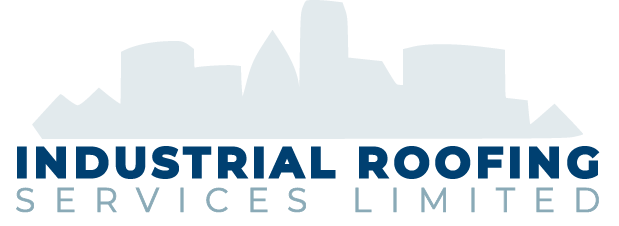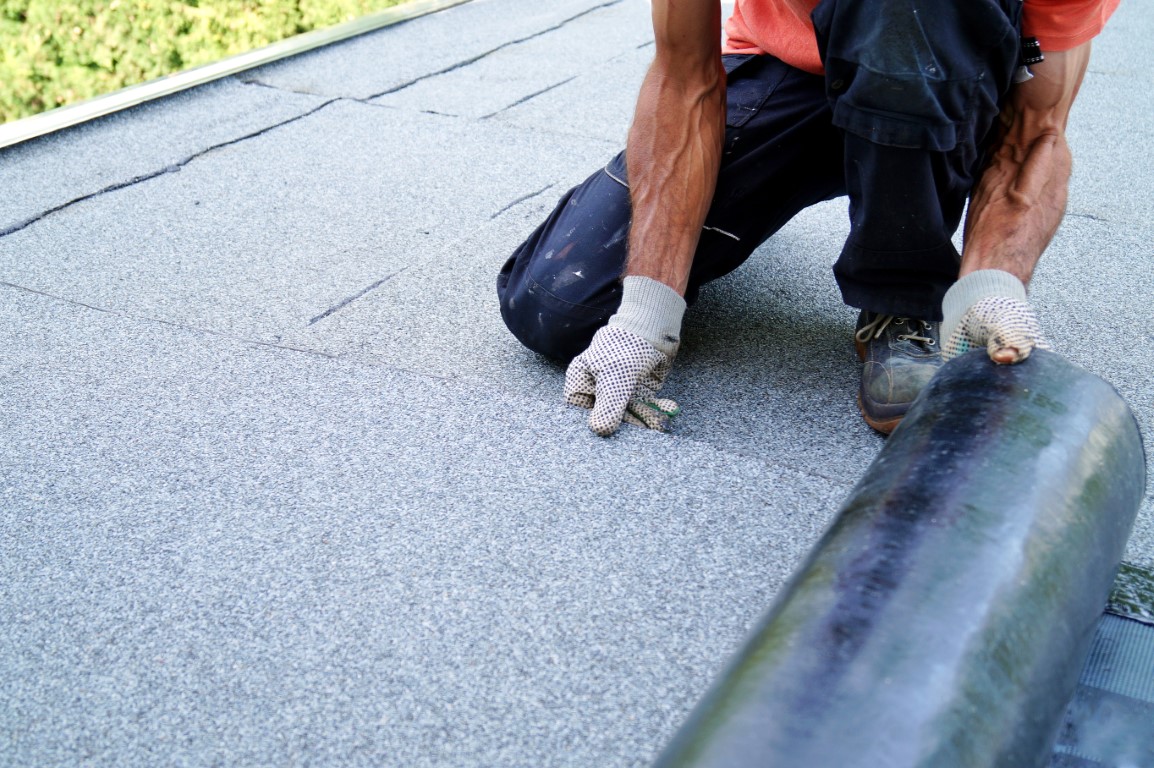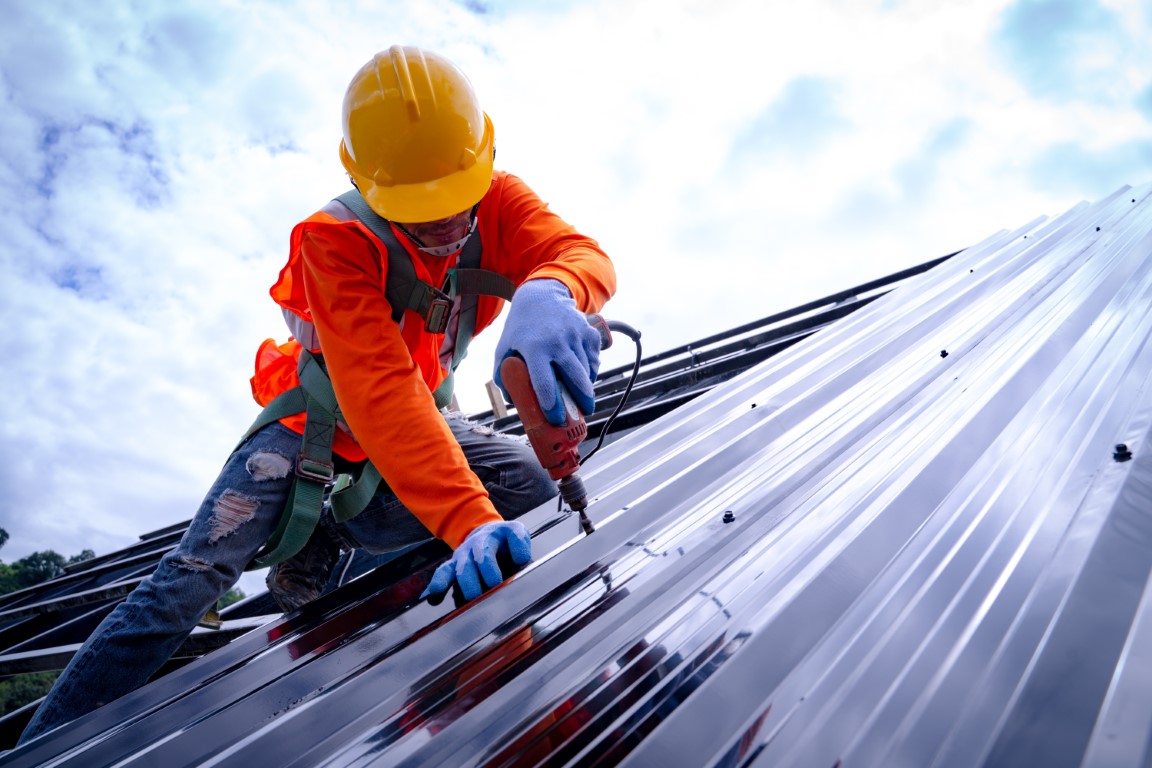Flat roofs. They look sleek, modern, minimalistic, but underneath that clean edge, water can be plotting mischief. So, is it worth fussing over drainage? Absolutely. Without proper drainage, you’re basically asking your roof to become a swimming pool after every storm. The good news? With the right solutions, you can prevent pooling, leaks, and even structural nightmares before they happen. Let’s dive into how to get your flat roof draining properly.
Table Of Contents:
Why Good Drainage Is So Important
1. Interior Drains
2. Scuppers
3. Gutters
4. Downspots
Evaluate Your Roof For The Best Drainage Solution
Why Good Drainage Is So Important For Flat Roofs
Picture this: winter rains, melting snow, and – oh yes – spring thunderstorms. If your flat roof doesn’t move water efficiently, everything slows down. Water starts to sit. Debris accumulates. The tar, caulking, and membranes begin to deteriorate. And then, voilà, your roof has become a liability, not an asset.
Poor drainage doesn’t just damage the surface, it can affect the building itself. Walls, foundations, and even insulation suffer. Ponding water adds weight (seriously, a single inch across a large commercial roof can weigh over a hundred pounds per 20 square feet). Over time, that extra load stresses the structure, sometimes leading to collapse if it’s bad enough.
So, in short? Good drainage isn’t optional. It’s survival. It keeps your roof long-lived, your property safe, and your wallet…less traumatized.
1. Interior Drains
Think of interior drains as the unsung heroes of commercial roofing. Hidden within the roof or parapet walls, these drains quietly pull water away, kind of like a rooftop vacuum. You don’t see them, but you’ll definitely notice when they’re missing or clogged.
How They Work:
Water gathers at the low points of the roof (because, yes, even flat roofs aren’t perfectly flat, they’re subtly pitched). The interior drain collects it, funnelling it into piping hidden below, safely away from walls and surfaces.
Benefits:
- Protects walls and foundations from water damage.
- Pipes are insulated naturally by the building, so freezing isn’t usually an issue.
- Customizable for aesthetics – no clunky pipes interrupting the building’s lines.
Cons:
- Installation and maintenance are pricey.
- Hard to inspect without a professional – don’t try to DIY this one.
- Even small debris can cause major clogs, so vigilance is key.
There Are 2 Types Of Interior Drainage Systems
1. Gravity Drainage System
This is the classic approach. Water flows naturally, downhill – into the interior drain, and then down through pipes to the ground. It’s reliable, simple, and works best for smaller commercial roofs (think under 150 m² per drain). The system is low-tech but effective, provided your roof is designed with positive drainage (aka a slight slope).
2. Siphonic Drainage System
Fancy a system that feels a little futuristic? That’s siphonic drainage. It doesn’t rely on slope. Instead, it creates a low-pressure vacuum inside the pipes. Water is pulled in fast, like nature got a little turbo boost. This is perfect for larger commercial buildings – warehouses, malls, airports – anywhere the sheer volume of water could otherwise overwhelm a gravity system. Fewer pipes, flatter slope, and rapid drainage, what’s not to like? Just remember, maintenance is still necessary to keep debris from blocking the high-speed flow.
When Are Interior Drains Recommended?
Interior drains are best suited for large commercial or industrial buildings with broad, flat roofs – places like warehouses, malls, or office complexes. They’re ideal when you want all drainage components hidden inside the structure, keeping exterior walls clean and uncluttered. Because they’re protected from the elements, interior drains also make sense for buildings in colder regions, where freezing could cause problems for external systems.
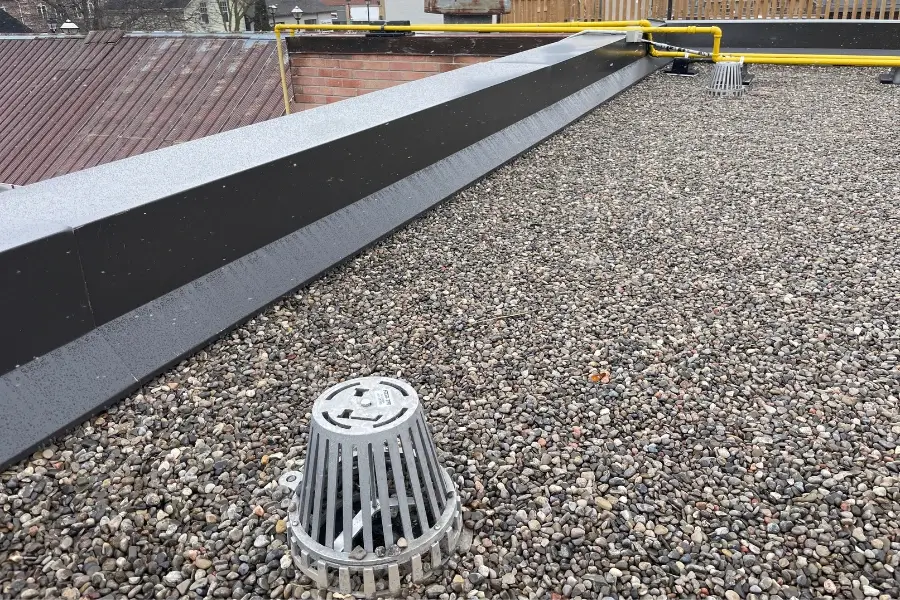
2. Scuppers
Scuppers are simple, yet incredibly effective. Picture them as rooftop exit doors for water – small wall openings that give trapped rain a clean escape route. Installed through the parapet walls or roof edges, they allow water to flow off the roof instead of pooling. Typically, this water is directed into a protective metal chute, downspout, or gutter system below, ensuring it’s safely carried away from the building’s foundation.
What makes scuppers so clever is their simplicity. There are no complex pipes running through the building, no hidden drains to maintain – just an open outlet that uses gravity to do the work. They’re often lined or fabricated with corrosion-resistant metals like aluminum or galvanized steel, giving them both function and a subtle architectural appeal. In many commercial buildings, scuppers are paired with leader heads or decorative spouts to control water flow and reduce splashing, combining practicality with a clean visual finish.
Benefits:
- Affordable and low-maintenance.
- Large openings rarely clog if designed correctly.
- It can add a touch of architectural flair.
Cons:
- Exposed to winter freezing, pipes and channels can freeze.
- Debris in the leader pipe can still cause problems.
- Not ideal if your roof has tight corners or minimal wall space.
When Are Scuppers Recommended?
Scuppers shine on commercial buildings with a moderate slope or smaller footprint roofs. They’re best when you want a low-cost, simple, and durable solution – but not on massive flat expanses where water volume could overwhelm them.
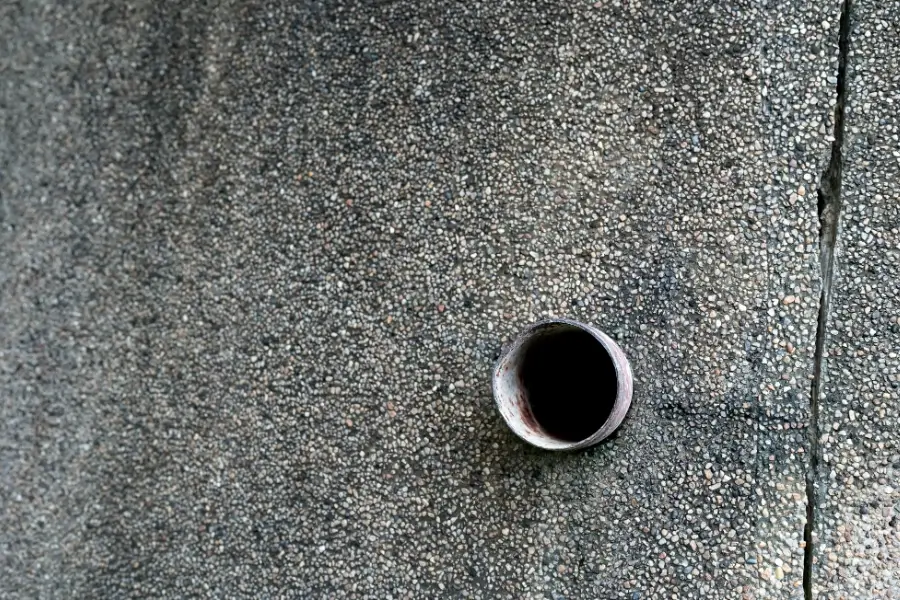
3. Gutters
Sure, gutters are more common on residential homes, but that doesn’t mean they’re off-limits for commercial use. On smaller buildings with short roof spans or mild slopes toward the edges, gutters can actually do a fine job managing runoff.
They’re typically mounted along the roof perimeter, collecting water as it sheets off the membrane surface and channelling it into downspouts. Simple, visible, and easy to maintain.
The catch (pun intended) is that gutters depend on gravity and open exposure, so they’re not ideal for large flat roofs that collect vast volumes of water in heavy storms. Still, for low-rise retail units, small offices, or older brick buildings that already have architectural eaves, gutters can be a practical and budget-friendly drainage option, nothing fancy, but dependable if kept clean.
Benefits:
- Cost-effective and widely available.
- Protects walls, windows, and foundations.
- Can handle some debris and even clean themselves a little with rainfall.
Cons:
- Open to the elements, leaves and twigs can jam them.
- Must be regularly maintained, especially in the fall.
- Susceptible to ice and cracking in winter.
When Are Gutters Recommended?
Flat roofs with a slight edge slope can benefit from gutters, especially when paired with downspouts and properly sized openings. They’re excellent for smaller commercial properties or buildings where aesthetics matter.
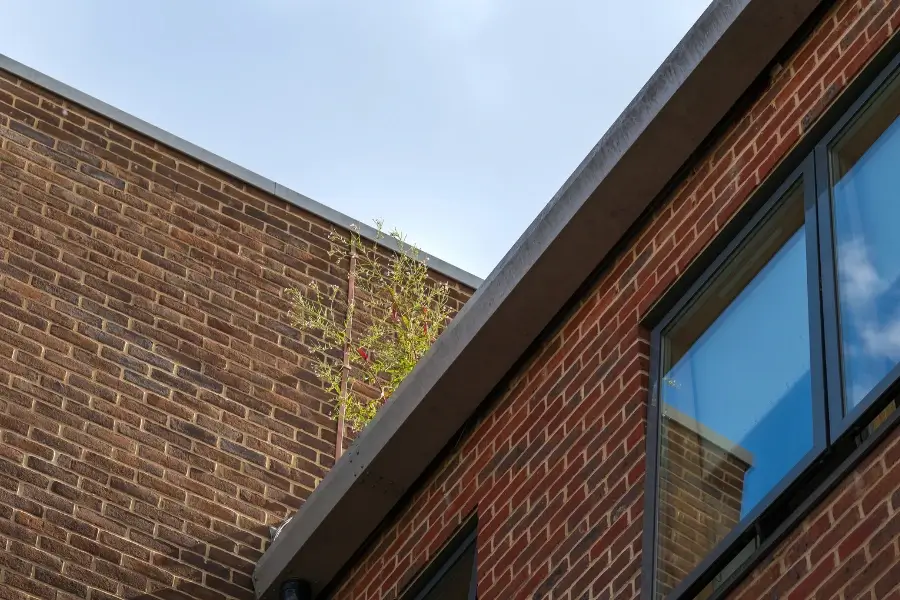
4. Downspouts
Downspouts are the unsung sidekicks to gutters and scuppers, the vertical exit route that actually gets the water off your building. Once the runoff hits the roof edge, it needs somewhere to go, and that’s where downspouts take over, carrying water safely from the roof to ground level or into a stormwater system.
In most commercial applications, these are rigid aluminum or galvanized steel pipes strapped to the exterior walls. You’ll see them often on smaller commercial plazas, schools, and older flat-roofed structures where interior drainage isn’t worth the cost or complexity.
Functionally, they’re simple. But the trick is in quantity and sizing: too few, and they’ll overflow in a heavy downpour; too small, and they’ll clog faster than you can say “spring thaw.” Despite their simplicity, a well-placed downspout system can mean the difference between a dry façade and years of water staining or brick spalling.
Benefits:
- Prevents exterior wall damage and mould growth.
- Keeps foundations dry.
- Cost-effective and easy to install on most commercial buildings.
Cons:
- It can clog if not maintained.
- May need multiple downspouts for larger roofs.
- Exterior placement exposes them to freezing and impact damage.
When Are Downspouts Recommended?
Downspouts are best for commercial buildings of all sizes, but work particularly well when combined with gutters or scuppers for a complete edge-drain solution.
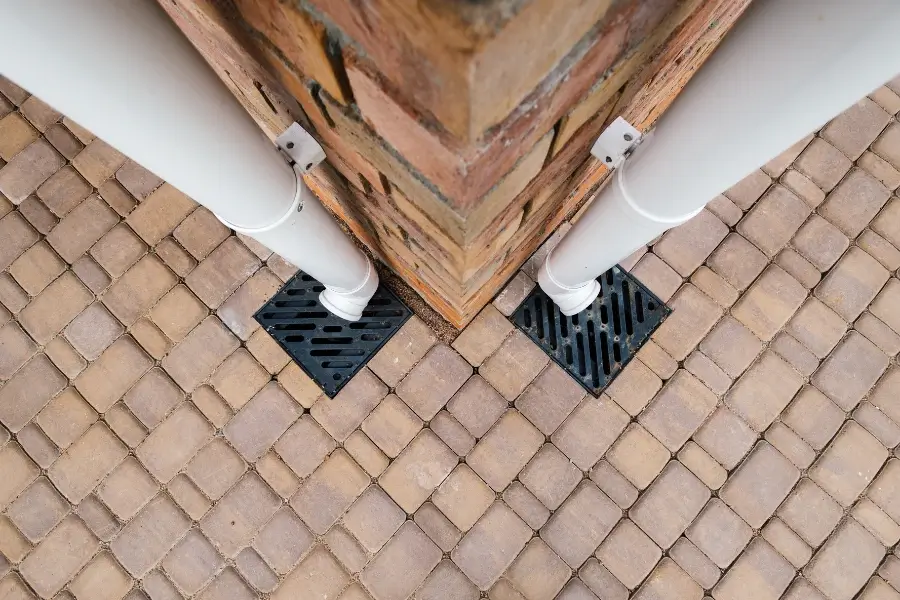
How To Evaluate Your Roof To Decide On The Best Drainage Solution For You
Step One:
Don’t climb up there yourself. Seriously. Safety first – Ontario winters, slippery membranes, and steep parapets are no joke.
Step Two:
Call the pros. We recommend our licensed team at Industrial Roofing Services Limited to conduct a thorough roof inspection. Not only do we ensure your safety, but we also evaluate slope, ponding issues, membrane condition, and potential drainage paths.
Step Three:
Assess the roof’s specifics. Things to look for:
Low spots where water collects (ponding areas).
Existing drains or scuppers and their condition.
Debris accumulation and potential clog points.
Roof slope and size – large commercial roofs may require siphonic systems.
Step Four:
Match drainage solutions to your roof. Based on the inspection, you’ll decide: interior drains, scuppers, gutters, downspouts, or a combination. Larger footprints? Consider siphonic drains. Tight edges? Scuppers or gutters may be best.
Step Five:
Schedule maintenance plans. Drainage systems aren’t “set it and forget it.” Debris, leaves, and seasonal changes mean regular inspections and cleaning are non-negotiable.
And remember, while DIY can be tempting, a professional inspection isn’t just a recommendation, it’s a critical step to avoid expensive water damage, structural stress, and headaches down the line.
Industrial Roofing Services Limited has been keeping Toronto, GTA and Southern Ontario roofs high and dry for over 45 years. From flat roof replacement to emergency leak services, our licensed, insured team ensures your drainage systems are installed correctly and maintained efficiently – saving you money, time, and stress.
Call us today at (905) 760-0735 to book a FREE consultation or inspection. Let’s keep your roof doing what it does best: protecting your building.
